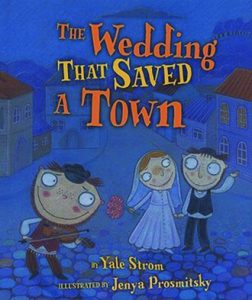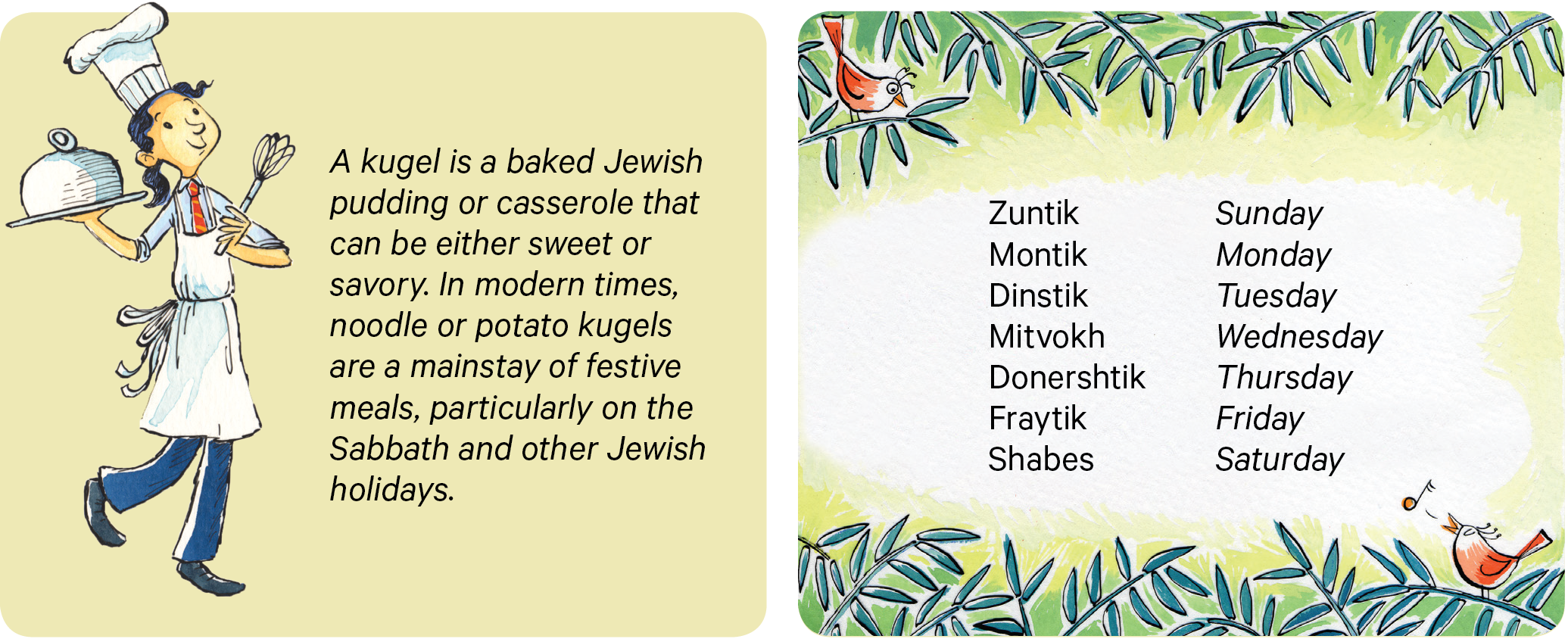Lesson 1: Learning “Bulbes”
Summary: Students sing “Bulbes” in Yiddish and explore the Ahava raba mode through improvisation.
Materials: Musical Explorers CD or online audio, pencils
Standards: GA: ESGMK-2.PR.1, ESGMK-2.RE.1, ESGMK-2.RE.2, ESGMK-2.CN.1, ESGMK-2.CN.2
SC: GM.PR.NL-AH.3, GM.RE.NL-AH.6, GM.RE.NL-AH.7, GM.CN.NL-AH.8, GM.CN.NL-AH.9
Vocabulary: Ahava raba, klezmer music, Yiddish
Sing “Bulbes”
- Listen to “Bulbes,” Track 34.
- Dan performs klezmer music, a type of Jewish folk music from Eastern Europe.
- Listen to the “Bulbes” pronunciation, Track 35, and practice speaking the lyrics in Yiddish
- Listen to “Bulbes,” Track 34, again and sing along.

“Bulbes” Chorus
Zuntik bulbes, Montik bulbes,
Dinstik un Mitvokh bulbes,
Donershtik un Fraytik bulbes,
Shabes in a novene a bulbes kugele,
Zuntik vayter bulbes!
On Sunday, potatoes, on Monday, potatoes,
on Tuesday and Wednesday, potatoes,
on Thursday and Friday, potatoes,
on Saturday, for a change, potato kugel,
on Sunday, potatoes again!
The Yiddish Language
Klezmer music is sung in the Yiddish language, which dates back to the 9th century. It is the language of the Ashkenazi Jews, who migrated to Eastern Europe (present-day Romania, Poland, Czechia, Hungary) after facing persecution in the Roman Empire. Prior to World War II, there were as many as 13 million Yiddish speakers worldwide. This number declined dramatically after the Holocaust; more than 5 million of the 6 million killed were Yiddish speakers. Today the number of Yiddish speakers is far less, with some estimates close to only 1 million people worldwide.
Explore Instruments in a Klezmer Band
- Listen to the examples of the clarinet on Track 36 and the violin on Track 37.
Invite students to mimic back with their voices what they hear.- The violin and clarinet are two instruments commonly heard in klezmer music. Klezmer musicians play their instruments in a way that imitates the human voice.
- Listen again to the clarinet and the violin, and ask students to share what kinds of human sounds they hear (i.e., crying, laughing).
- Listen to “Bulbes,” Track 34, again and listen for the violin and the clarinet making these sounds in the instrumental section of “Bulbes.”
Explore the Ahava Raba Mode
-
- Klezmer music is based on many different modes, or collections of notes similar to a scale. One of the modes heard in klezmer music is called Ahava raba. You can hear this mode in “Bulbes.”
- Listen to the Ahava raba mode, Track 38.
- Sing the Ahava raba mode on a neutral syllable.
- Listen to “Bulbes,” Track 34, again and improvise using notes from the Ahava raba mode during the instrumental break.

The Yiddish word klezmer originally meant “musician.” Today, it has come to characterize the style of secular music played in Jewish communities during joyful celebrations, such as weddings.

Literacy Extension:
The Wedding That Saved a Town, by klezmer musician Yale Strom, is about a klezmer
musician, Yiske, and his band who must find a groom to participate in an unconventional wedding.
Creative Extension: Create New Lyrics to “Bulbes”
- Discuss why potatoes might be eaten every day. Explain what a potato kugel is and its significance.
- What are some types of food that we could eat every day? (Examples: rice, bread, chicken, and pasta)
- Have students choose one type of food they could eat every day of the week.
- How could you prepare that type of food differently for a special occasion? (Examples: rice pudding, garlic bread, chicken tacos, and pasta with meatballs)
- Using SG37, “My New Lyrics for ‘Bulbes,’” have students fill in their chosen type of food to eat every day of the week, using their “special occasion” food example for the meal on Saturday, or Shabes.
- Listen to the “Bulbes” accompaniment, Track 39, and have students sing the song using their new lyrics.

Musical Word Wall
Add the words Ahava raba, klezmer music, and Yiddish to the Musical Word Wall.
PDF Downloads
SG37 ↓ Download File
Musical Explorers Audio Tracks
